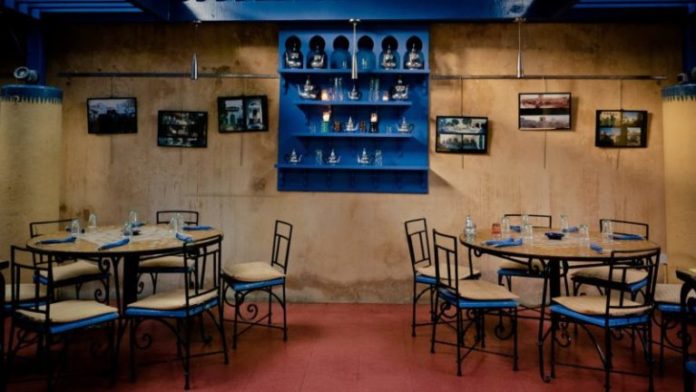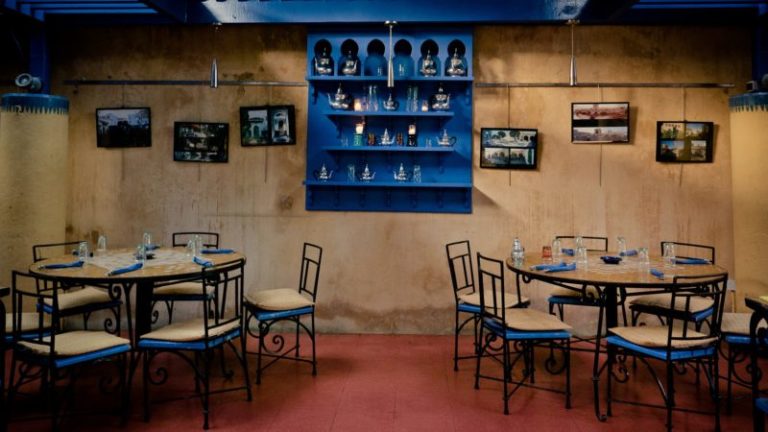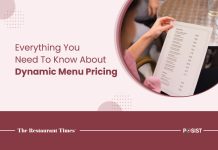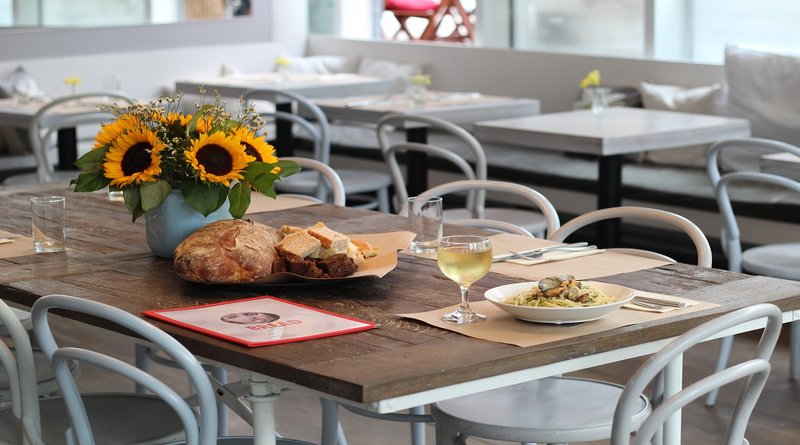The most common query that we receive while fraternizing with restaurant owners is about the Restaurant Profit Margins-what is the Average Profit Margin for a restaurant, how to calculate restaurant margins, and so on. While there are many parameters to gauge a restaurant’s success, your net profit margin gives you a clear picture, whether the restaurant is going to survive in the long run. Find out more about the Restaurant Key Performance Indicators (KPI) here. The average restaurant profit margin differs for different formats. Anything above 20% can be considered as a decent restaurant profit margin.
How To Calculate Net Restaurant Profit Margin?
You can calculate your net restaurant profit margin for an accounting period by dividing net income by sales.
Net Profit Margin = Net Income/Gross Sales x 100
Where,
Net Income = Gross Revenue – Operating Expenses
Gross Revenue is sales revenue from selling food, drinks, and merchandise plus gains, i.e., income from a transaction that doesn’t fall in your regular business operations. For example – profits from selling old restaurant furniture or kitchen equipment would not be added to gross revenue. And Operating Expenses are the costs you incur to run your restaurants, such as the cost of ingredients, rent, wages, equipment and depreciation, utilities, interest and taxes, repairs, and maintenance.
For instance, for a given year, your revenue from restaurant sales is Rs. 1.5 million, you earned Rs. 0.5 million in gains and spent Rs 1.2 million in expenses.
Net profit will be = Rs. ((1 million + 0.5 million) – 1.2 million)/1.5 million * 100 = 20%
That means you pocketed two paise for every rupee of sales.
Now, your restaurant’s profit margin gets affected by a slight change or an unexpected event. For instance, the price of food grains or rent can affect your margins noticeably. The only way you can increase your restaurant profits is to increase sales without simultaneously increasing your operating expenses. The first thing you need to do is to keep track of all the running costs of your restaurant. Then you can take steps to reduce costs and increase your restaurant profit margins.
4 Main Areas To Focus On To Improve Your Restaurant Profit Margin
You should focus on the following four areas to improve your restaurant operations and thus increase your restaurant profit margin.
1. Reduce Overall Food Costs
Well, it may seem laughable. How can you reduce food costs in a restaurant? If you are to increase sales, your food costs will only go up. That’s right. However, there are ways you can improve sales and still reduce food costs.
- Waste and theft are significant threats to restaurant profits. Decrease the amount of food you throw away. Develop a laser focus on correct portion control. Ask your chefs or prep team to pre-measure all food items and always use measuring utensils. Regularly conduct trash talks (asking why something has been tossed in the trash can) with the crew. It will keep your staff mindful of wastage. Also, keep track of theft and pilferage. Theft of expensive foods or alcohol can significantly increase your food costs.
- Negotiate prices with suppliers. Keep track of your regularly ordered foods or foods ordered in bulk and ask for discounts on them. Or, buy directly from farmers or producers, which will save you the cut of the middlemen and wholesalers. Also, by sourcing foods locally, you can considerably cut down your freight expenses and food costs.
- Mind your menu. You can cut down your food costs marginally, only by pricing and designing your menu the right way. Several factors need to be taken into consideration during menu pricing, such as direct costs, indirect costs, volatile costs, etc. Find the correct way of pricing your menu here.
2. Try Decreasing Overheads
While reducing fixed costs like rent is steep, you can focus on other variables like salaries, electricity, and water.
- Now, you cannot just slash down the salaries of your staff without creating a risk of hysteria or even mass walkouts. However, you can hire qualified staff and train them well to be efficient and more productive. Also, by incentivizing employees, you can ensure happy staff, high performance, and more loyalty, which in turn translates into reduced hiring, training costs, and more profits. You can then very effectively run your restaurant with limited staff.
- Another thing to consider is making your staff multi-task. For example, the servers and bartenders can clean up the tables before going home. It will save you the expense of hiring a cleaner.
- Restaurants have high utility costs. Apart from using energy-efficient equipment, you can also keep a few things in mind to save energy—program the air condition unit from adjusting during nonbusiness or slow hours. Find small leaks and use low flow where possible. Train the kitchen staff to reduce idle times on ovens, boilers, etc. and your dishwashing staff to not run 1/2 racks.
- Wastage in the kitchen has the potential to burn a hole in your pockets. Hence, employ a POS that comes with comprehensive recipe management and inventory management feature. While the former will ensure that all the dishes are prepared as per the desired procedure and hence, the number of faulty or redo dishes can be avoided. The latter is the inventory management feature will ensure that you use your stock appropriately; this will reduce the risk of raw materials getting spoiled in the inventory. Also, if the feature is empowered to send you real-time alerts whenever an item reaches its reorder level, you will save yourself from ordering items that are already present in the inventory.
3. Leverage Technology
Installing an ideal POS system can help you reduce costs and improve your restaurant’s profit margins. A POS system can help you
- Track inventory and set reordering schedules to avoid thefts
- Reduce waste from spoilage and ordering mistakes
- Increase table turnover rates
- Track sales so that you can keep your inventory in order and hire people accordingly
- Identify trends like best-selling items, high-margin items, and underselling things to help you redesign your menu accordingly
- Manage employee hours and payroll
- Increase table turnover rates and staff efficiency
Read in detail how you can leverage restaurant technology to make smart data-driven decisions that would help you improve the profit margins and boost revenues.
4. Increase in Sales
It is a no-brainer that to increase your restaurant profit margin, you need to improve your sales. There are only two ways you can increase your restaurant sales, either by getting more customers or selling more to the existing ones.
Leverage technology and various other means to promote your restaurant, such as hosting special events, offering discounts, etc. to attract new and repeat customers. Here are some marketing ideas that would help you increase your profits.
Also, you can increase profits by selling more to your existing customers. Some unconventional ways through which you can increase your sales are –
- Change the menu to include more profitable or high margin items-Train your employees to upsell these items. At KFC, the waiters are always trying to sell you more like French fries, ice creams, or even upsize your Pepsi.
- Sell merchandise- Do not laugh at the suggestion. Just imagine all the money Hard Rock has minted so far selling T-shirts. And, does it make Hard Rock charge for its burger any lesser?
- Dangle temptations- Many restaurants keep candies, toys, etc. for kids that are chargeable at the checkout counter. It’s a great way to earn some quick buck on the side. Conrad Hotel in Pune has kiosks in the customer lounge selling chocolates, cakes, and other baked goodies as customers wait for their tables, while Salt Water Café in Mumbai sells various types of bread, dips, and spreads.
No element works without the other. Keep in mind that all of these working in tandem can only help you control your expenses, your hidden costs, and increase your restaurant profit margin exponentially.




















Most of the restaurant owners fail to comprehend the concept of the profit margin of restaurants. This article talks about restaurant profit margin and how you can improve it in the simplest way possible. A great read! Thank you! 🙂
Consider evaluating the profitability and sales record for each individual item on the menu to determine if it is priced appropriately. If a menu item has low sales and a low-profit-margin, consider either raising the price of the item or eliminating it from the menu. Good Read.
Right reetika
Great information on calculating the profit margin for a restaurant. Average restaurant profit margin differs for different restaurant formats. Anything above 30% is good.
Every restaurant owner is concerned about maintaining a good restaurant profit margin. This article is very informative and will help every restaurant owner.
I like how you have mentioned every aspect this definitely gives more insights.
It is useful for the f/b industry.